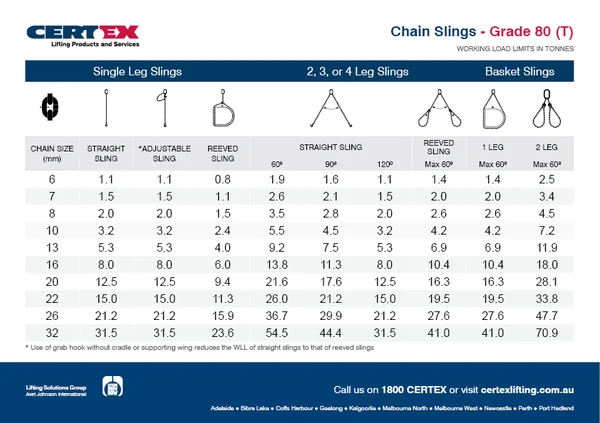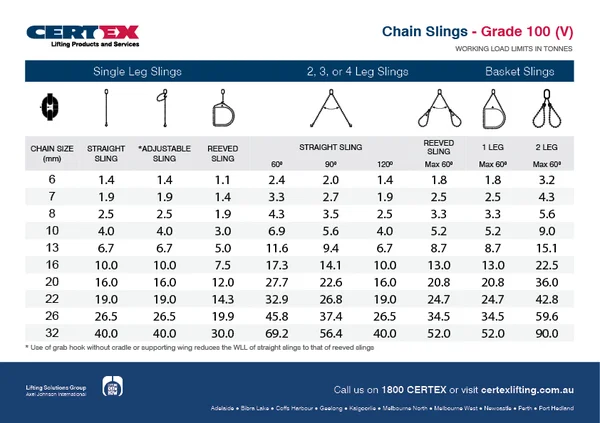Chain slings are an essential tool in the lifting and rigging industry, renowned for their strength, durability, and versatility. However, incorrect use may lead to accidents, causing damage to the load, equipment, or even personnel. We recommend the following safety guidelines be followed to ensure safe usage of lifting chains.
Routine Inspection
Before a chain sling is used, it is essential to inspect it for any signs of damage. Indicators of wear include stretched links, nicks, gouges, and heat damage.
Regular Maintainance
Regular inspections and maintenance are key to the longevity of your chain slings. CERTEX Lifting offers a comprehensive range of inspection services to keep you lifting efficiently and safely.
Proper Rigging
Make sure the load is well-balanced and secured before lifting. The chain sling should be rigged in a way that prevents twisting or knotting.
Abide By Load Limits
It is imperative to never exceed the chain sling's working load limit (WLL). This limit is calculated according to the sling's grade, size, and angle of use. The diagrams below outline the WLL of Grade 80 and Grade 100 chain slings according to AS 3775.
Grade 80 Chain Slings Weight Load Limit in Tonnes
Australian Standard AS 3775

Grade 100 Chain Slings Weight Load Limit in Tonnes
Australian Standard AS 3775

For basket slings and engineered lifts, please consult AS 3775 Parts 1 or 2, accordingly.
The values expressed in this table exceed or meet the minimum requirements of AS 3775.2 and are stated in tonnes of 1000kg.
The above maximum working load limits are for general conditions of use to group classification of crane mechanisms of M3 as specified in AS1418.1 WLL must never be exceeded, even at angles less than 60 degrees or if the load is flexible. For other than general conditions of use the WLL will be derated to conform to the group classification of crane mechanisms as specified in AS1418.1.
DISCLAIMER: This Working Load Limit Chart is provided as a guide only. When preparing lifting calculations please check the relevant Australian Standard.
Contact us today if you require further information about how to safely use your chain slings.
Understanding Chain Sling Configurations
What's the difference between a single and double leg sling? Why use a basket sling rather than a choker sling?
Chain Sling Regulatory Compliance and Standards
Discover more about regulations and compliance standards relating to chain sling usage.



